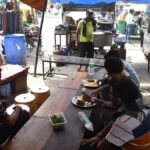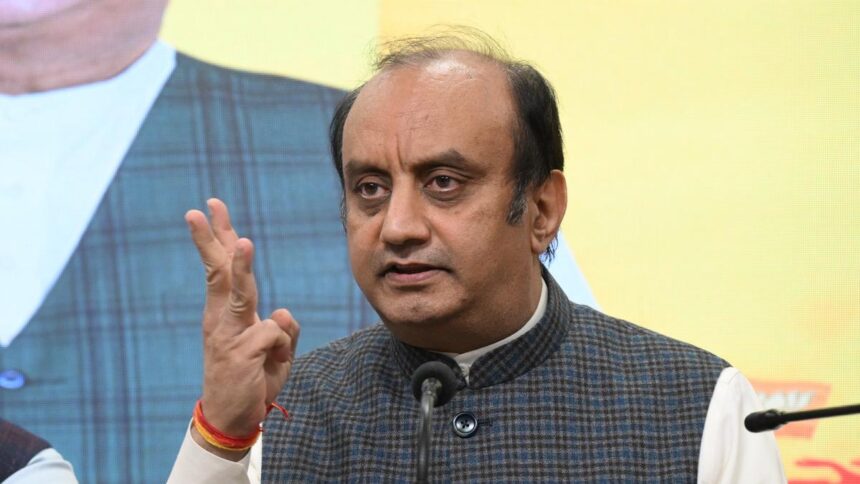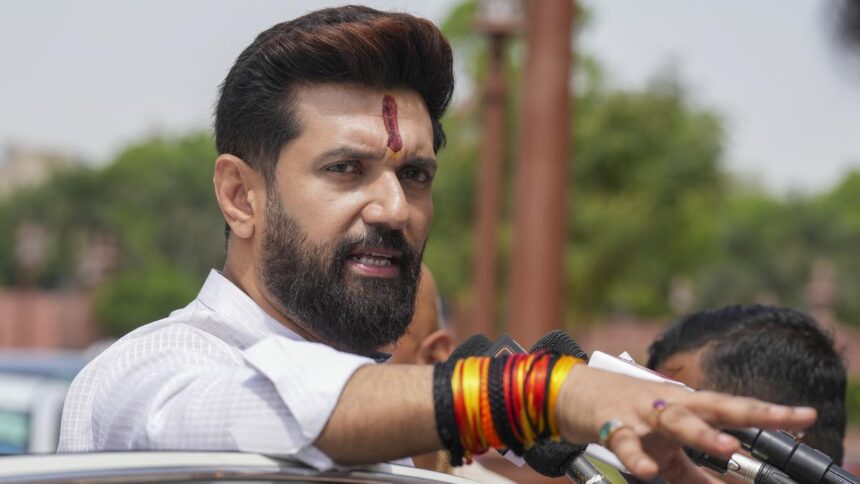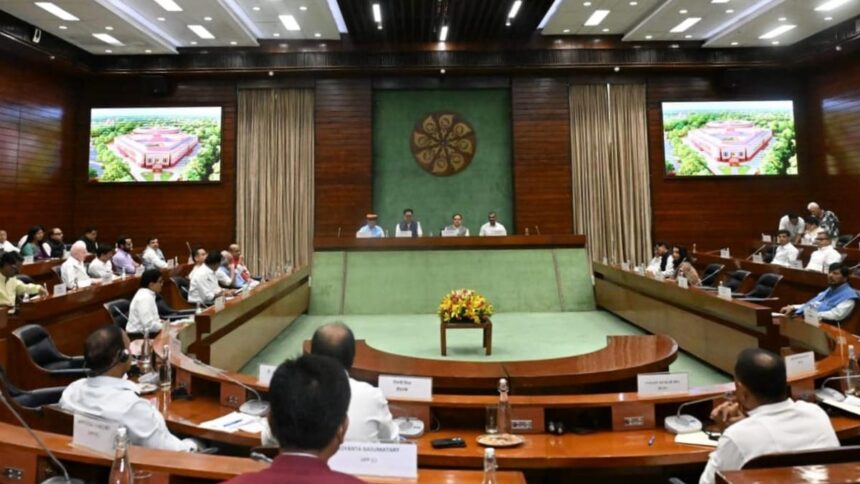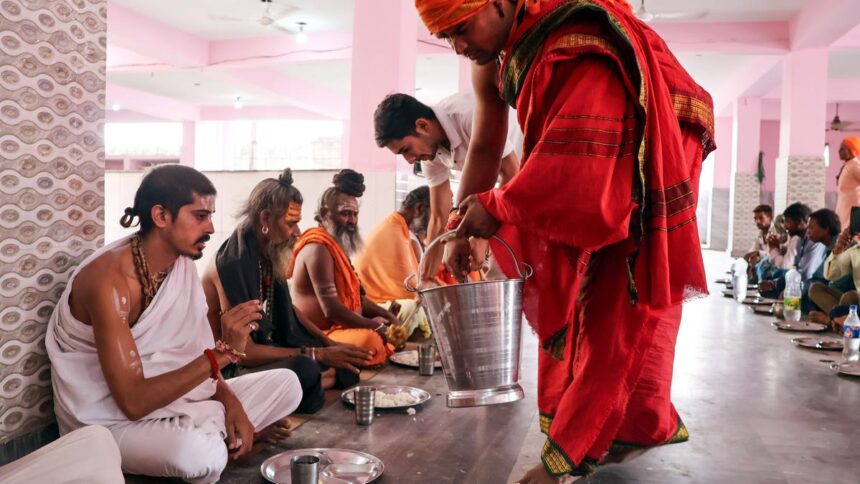Six decades ago, little boys would scoop out sand from the dry riverbed of the Vaigai in Madurai during summer, to see water rising from below. They would wait until the water was clear, and then drink to their heart’s content.
The river originates in the Periyar Plateau of the Western Ghats in Tamil Nadu, flowing southeast near Madurai on its way to empty itself into the Palk Bay. Along its course, the river enriches not just the landscape, but the lives of the people dwelling nearby.

The districts of Madurai, Tiruchi, Viluppuram, and Krishnagiri account for the highest number of inland fisherfolk in Tamil Nadu. “Among these, Madurai leads with 6,000 families, followed by 4,000 in Dindigul, and 2,000 each in Theni and Palani,” says R. Rajaguru, an overseer with the Tamil Nadu Government’s Department of Fisheries and Fishermen Welfare posted in Kodaikanal. The Vaigai fills up around 1,500 manmade ponds and irrigation tanks in Madurai, he explains. Many of these, along with the Vaigai dam in Theni district, are chief fishing resources.

While fishing techniques may differ depending on the depth of these waterbodies, Rajaguru says most fisherfolk use simple tools and a work ethic that does not exploit nature’s bounty. “They take what nature gives, and nothing more,” he says.
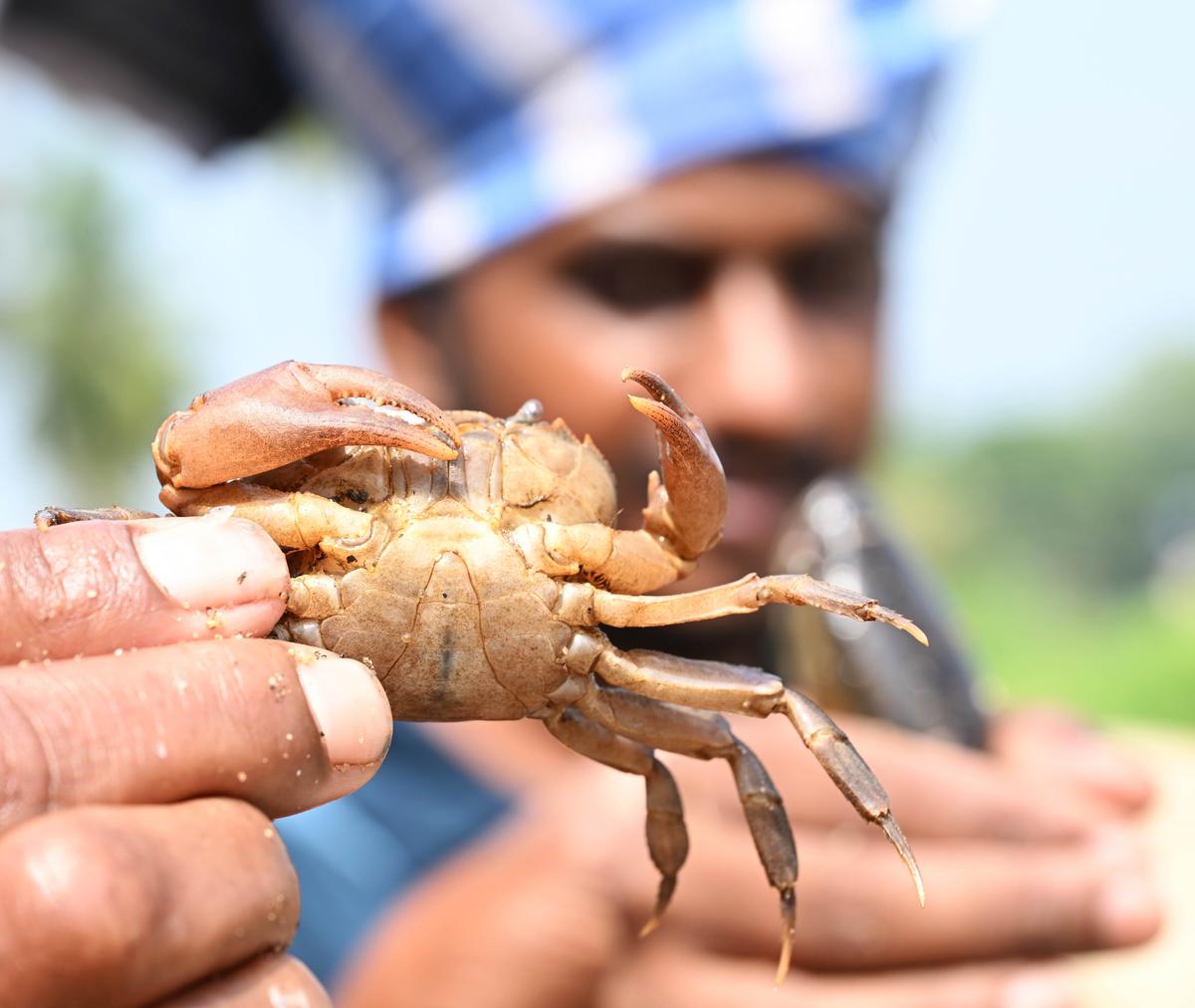
Anaipatti fisherman C. Vijayalingam shows his catch of the day.
| Photo Credit:
G. Moorthy
In Dindigul district, several families in Anaipatti and Mettupatti villages are inland fishers. Anaipatti is home to the Peranai regulator that was constructed across the Vaigai in 1918 by the British. It is here that fisherman C. Vijayalingam spreads out his veechu valai — a fishing net variety — in a graceful throw that lands in the water in a perfect circle. It is almost noon and the sun beats down on his head that he has turbaned with a checkered towel. He is not having much luck today, and after a few throws, decides to come out of the water.
The 28-year-old is among the 50 people in Anaipatti, home to around 800 families, that depend on fishing for a living. “My father is a fisherman, and so was my grandfather,” says Vijayalingam. He goes fishing through the year, staying away only on days the river is flooded during the monsoon.
Back-breaking work
A typical river fisherman’s workday starts at midnight. “I leave for the Vaigai dam in Theni around that time,” explains Vijayalingam. He travels by bike, joined by his team of five, reaching the river in two hours. Once there, he trudges through shallow waters with his net slung across his shoulder. Another man — they mostly work in teams of two — with a net-like basket called the aappa valai secured at his hip, follows. Vijayalingam casts his net, that can weigh up to 5 kg owing to the iron pellets tied to its ends, gathers it, and empties the catch into his assistant’s aappa valai.
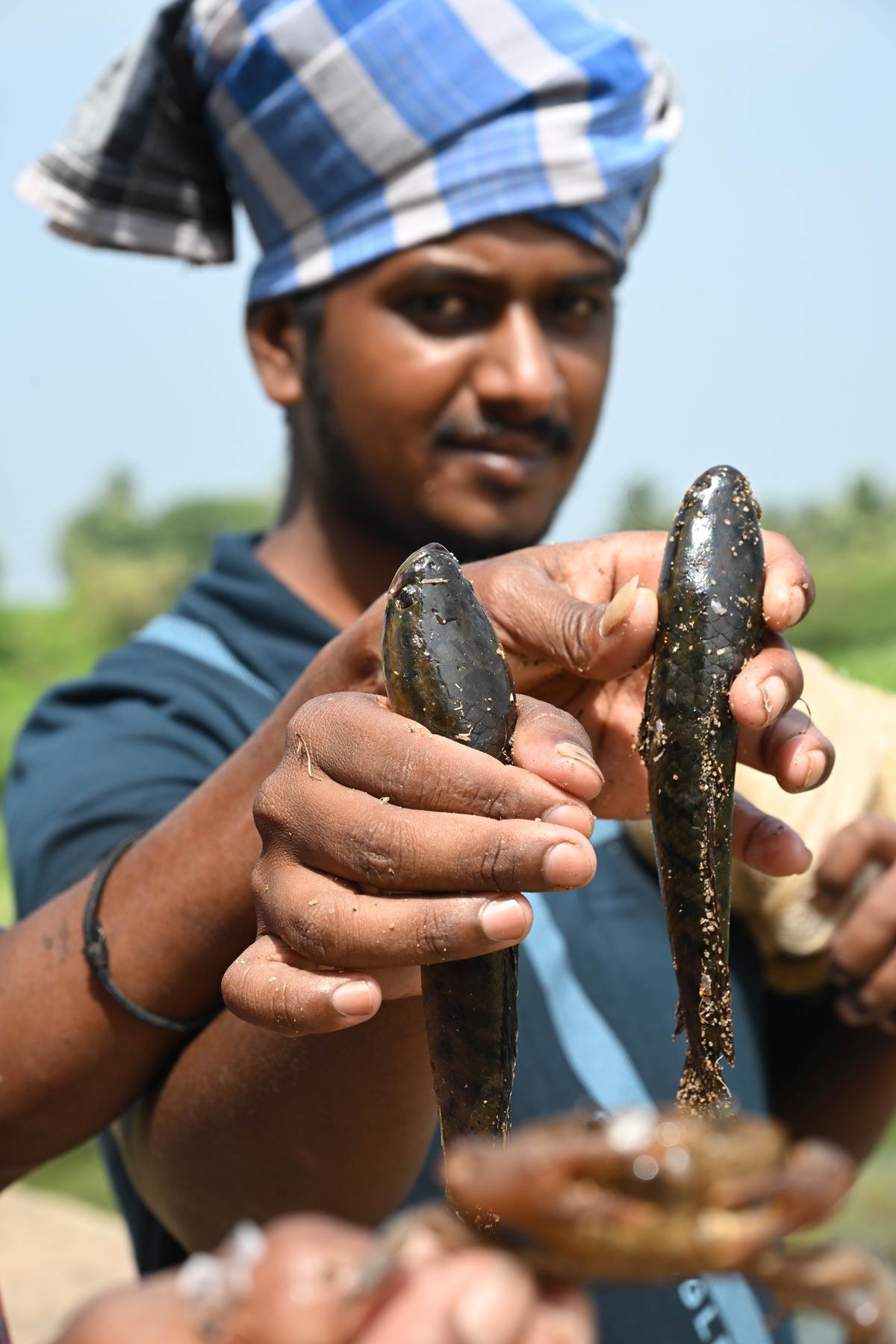
Anaipatti fisherman C. Vijayalingam
| Photo Credit:
G. Moorthy
“We repeat the process until we’ve caught enough, and start back at dawn,” he says. The catch is displayed in a basket on their bikes, and the men sell it at the many towns and villages along the way. “We get sold out by the time we are home in the afternoon,” says Vijayalingam. After a quick meal and a short nap, he prepares to set out all over again at midnight.
It’s backbreaking work that leaves him sleep-deprived, but Vijayalingam is happy doing it. “This is my parambarai thozhil [family occupation] and it gives me freedom. I am able to earn up to ₹500 a day and if I plan well, I can also save some,” he says. Some men choose to go fishing at the irrigation tanks, for which they employ coracles. “They use a net variety called the ari valai,” says Vijayalingam. The tanks and ponds, though, are not full through the year. “When there is no water, these men work as drivers, farmhands, and cooks,” he adds. Despite these challenges, the river keeps the fisherfolk rooted to the village, and they do not move to the bigger cities for better opportunities. “We prefer this life,” says Vijayalingam.
Fishing in Vedapatti lake in Coimbatore.
| Photo Credit:
Periasamy M.
Another fisherman, S. Surya, explains that when the river is in full flow, they also use the kattu valai across certain stretches. “This is a net that is tied across the water like a curtain, weighed down by iron pellets at the bottom,” he says. They leave the arrangement for about an hour or so after which the men retrieve the catch.
The fish varieties caught include salli kendai (carnatic carp), viraal (murrel), pallu kendai (grass carp), and jalebi (tilapia). “The smaller kinds sell for ₹100 to ₹150 a kg, while the viraal goes for ₹300,” says Vijayalingam.
Staying afloat
The Noyyal river runs through Coimbatore, originating from the Vellingiri hills in the Western Ghats. Although the city gets a steady supply of marine fish from nearby Kerala, apart from Rameswaram, it does have a demand for freshwater fish. Here, fish are reared by fishermen who buy juveniles from the Fisheries Department’s fish farms in places such as Bhavanisagar, Mettur, Thanjavur, and Manimutharu.
“We produce 2,000 lakh three-day-old juveniles a year that fisherfolk buy from us to rear in ponds and lakes across Tamil Nadu,” says S. Thillairajan, Deputy Director of Fisheries, Bhavanisagar. Varieties include catla, rohu, and mrigal.
One Sunday morning, we see fisherman N. Rajkumar coming out of the Valankulam, a lake fed by the Noyyal in the heart of the city. He has a good haul of tilapia that he offers for just ₹100. “I’m going home, may as well give this away,” says the 40-year-old. Most river fisherfolk families live in the Five Corner neighbourhood in the city, and according to Rajkumar, are from the Siviyar community.
“We chiefly use the nattu valai,” Rajkumar points out, adding that they hold on to sacks filled with polystyrene cubes to stay afloat in the water while fishing. Here, too, some fishermen use coracles.
Thillairajan explains that inland fishermen are members of district-level fisheries cooperative societies that take waterbodies on lease for fishing rights. He adds that in Western Tamil Nadu, Erode has the highest number of inland fishers due to the presence of the Bhavanisagar dam.
Like a mother
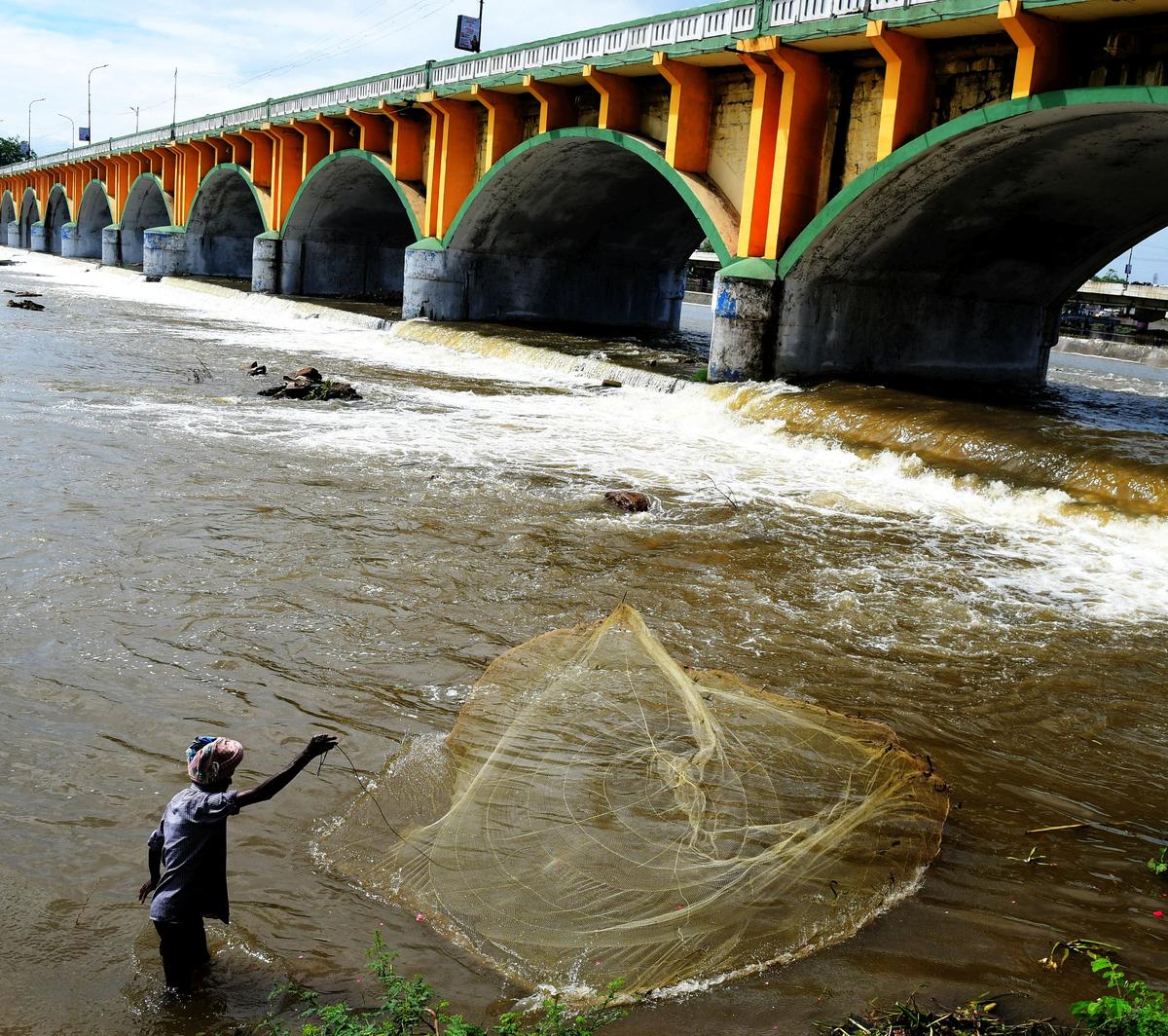
A fisherman casts his net in the Vaigai in Madurai.
| Photo Credit:
G. Moorthy
Anaipatti has several restaurants selling ‘fish meals’: there is rice, fish curry, and a slice or two of fried fish. We sit down for a meal at one of them.
The curry is delicious: although river fish have plenty of bones, what sets them apart is the defining earthy smell of freshwater, and a sweetish flavour profile as opposed to the bold flavours of sea fish. Locals say that once you develop a liking for freshwater catch, there is no going back to sea fish.
River fisherfolk lead a relatively risk-free life when compared to their counterparts in the seas. “But we do encounter risks,” says Vijayalingam. “Broken glass on the riverbed has cut into my feet, and once, there was a sudden surge in the dam when we were inside,” he adds. Luckily for his team, they made it out safe.
There are some rituals these fisherfolk have been following for generations. In Coimbatore, when the fish have matured and it is time for harvest, the men do not enter the water without visiting the Ayyasamy temple by the hills at Theethipalayam. “We sprinkle theertham [holy water] from the temple into the lake before fishing,” says Rajkumar.
At Anaipatti, fisherfolk worship the Vaigai on Ayudha Puja day every year, standing in knee-high water, offering puffed rice, bananas, betel leaves, and coconut on a platter. “Vaigai is like our mother,” says Vijayalingam. “We live by her banks, and she offers us a livelihood. She is our everything.”
akila.k@thehindu.co.in




